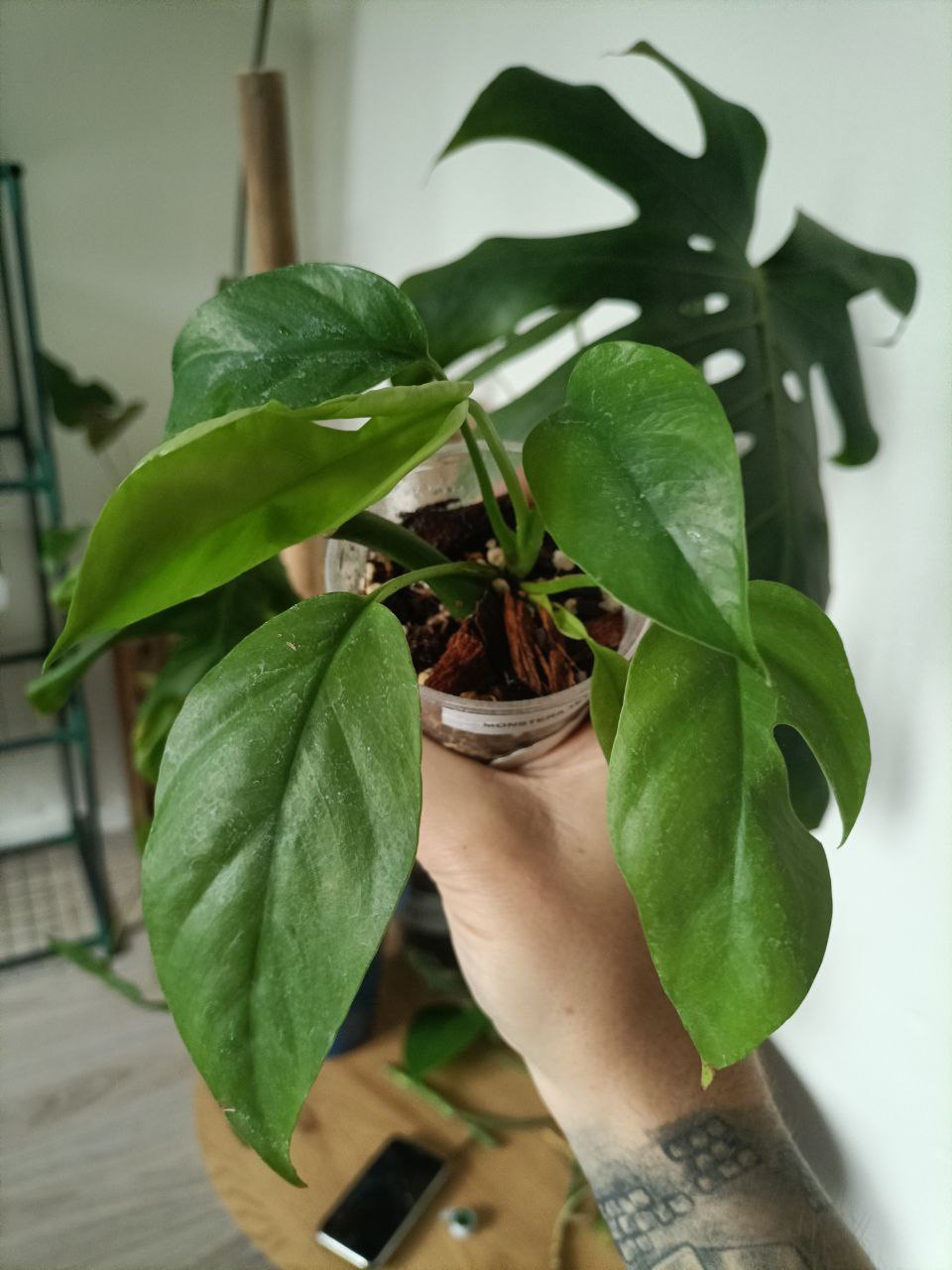Philodennis
Rhaphidophora tetrasperma
Rhaphidophora tetrasperma
Couldn't load pickup availability
Lighting: Rhaphidophora tetrasperma requires bright, filtered light. Indoors, direct sun is fine; outdoors, a little bit of dappled sun is fine as well. In my case, I keep it near a west-facing window (northern hemisphere), and outdoors I keep it in bright shade that gets a touch of morning sun. R. tetrasperma is decidedly NOT a low light plant - it will grow slowly and will produce small foliage if placed in an area with too little light.
Watering: Rhaphidophora tetrasperma likes to stay pretty moist, at least during growing season. I've personally noticed faster growth with regular waterings and not leaving it too dry for too long. That said, this plant won't pout if you forget to water it now and then, and is more sensitive to overwatering if anything. I typically water when the potting medium is dried down 1-2" and I don't let the root ball dry out. In the winter, you can cut down watering.
Humidity + temperature: This plant can tolerate standard household humidity (typically around 30-40%), but it will absolutely love added humidity! If you can place it near a humidifier or group it with other plants, it will greatly benefit. Temperature wise, it's like most other aroids and doesn't like temperatures that are too cold (nothing below 55 degrees) or too hot (100+ degrees). In the thick of summer where I am in Tennessee, I've noticed R. tetrasperma get a little wilty in temperatures over 95, and it will perk right up if I bring it indoors for a bit or at night when temps dip a little.
Soil + fertilizer: A chunky, well-draining substrate is KEY. You want a mix that is going to have plenty of aeration and stay moist, but never soggy. I use a mix I make myself, the same one I use for all of my Philodendron and Monstera species. It's a base of potting soil with equal portions of perlite/pumice, pine bark, finely shredded spaghum moss and horticultural charcoal. As far as feeding, these do well with a balanced or high-nitrogen fertilizer monthly during growing season. Cut down fertilizing drastically - or completely - during colder months when growth slows down.
Share


